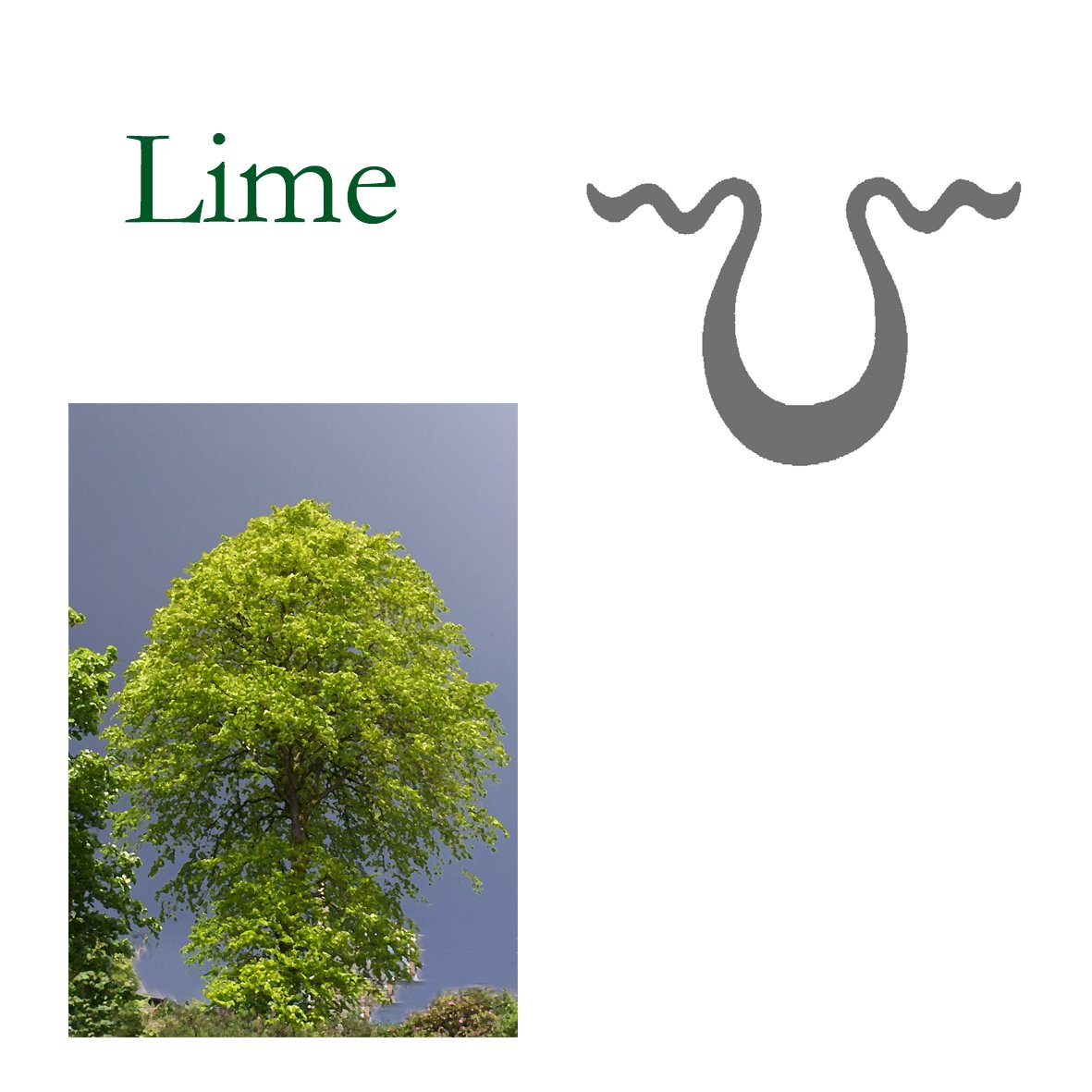LIME (Tilea x europa; Tilea platyphyllos; Tilea cordata)
Key: Development
The common lime is thought to be a cross between two other native species, the small-and large-leaved limes. It is a tall tree that begins branching near the ground making a tall domed crown up to 130 ft (40m). The large-leaved lime can be distinguished by the fact it doesn’t sprout from the base, unlike all other types. It reaches100ft. (30m) and has ascending branches around a narrow domed crown. The small-leaved lime has downward arching branches and, unlike the large-leaved lime, the leaf stalks are not hairy. Both have heart-shaped leaves, while in common lime the leaf bases are almost straight. All produce creamy clusters of sweet scented flowers in June and July. The order of flowering is: large-leaved limes followed by the common and small-leaved limes.
Limes are long-lived trees, some of the oldest trees in Britain, and were one of the main woodland species. The soft wood is sweet scented and easily worked, the flowers are calming and relaxing, the inner bark is fibrous and can be woven into mats and rope.
At a physical level this tree essence is calming and supporting. The endocrine system is helped to regulate itself and there is an enlivening of life-force at the cellular levels.
Lime calms anxieties within the mind and helps to ease extremes of emotion, particularly when this is to do with making practical use of one’s own developmental potential. I often the suppression of natural skills seriously depletes our life-energy or directs the energy into negative, damaging behaviour patterns. The Gall Bladder meridian is helped to restore a positive balance to these strong emotions.
The solar plexus chakra and the eighth chakra, located above the head, are brought into action. This introduces the creative power necessary to move from one level of activity to another—whether that is a new awareness or a change of life-focus—in such a way that individual balance and the structure of the personality is maintained. Lime is thus useful in times of rapid growth or change. It can be of great benefit to those who are unable or unwilling to accept or use their higher faculties and subtle sensing skills. Doubts and fears of all sorts ease, and the familiar entrenched patterns of past behaviour are easier to overcome.
Signature: A tree that can live for many centuries, grows to a very large size and yet constantly is able to offer itself as food from leaf, fruit and flower to a great number of insects, birds and animals. The heart-shaped leaves.
Comment: The lime is also known as the linden, its Germanic name. On the Continent the tree is still often found at the heart of the village as guardian and focus for the community. As a native tree, lime never naturally extended into northern Britain or Ireland and its apparent omission from Celtic tree lore, such as ogham lists, suggests an Irish origin for such material. In mainland Britain lime would have been such a predominant woodland species and so extremely useful both medicinally and as a material resource that there is no reason, other than especial sanctity, why it would not have been included along with other tree species. Lime essence is a very light, refreshing joyous energy. Very good to infuse into a heavy atmosphere.

